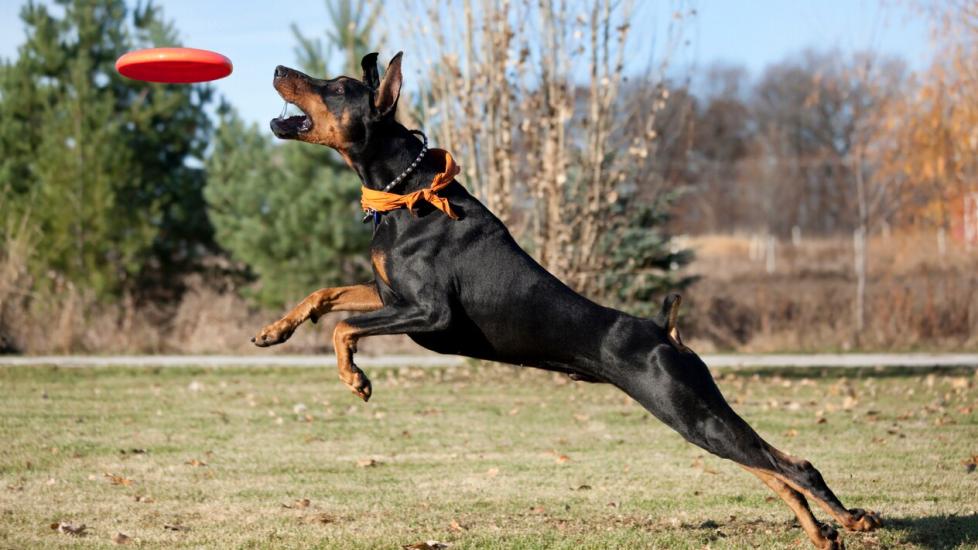Lifespan: 10-13 years
Coat Length: Short
Alias(es): Dobermann, Dobe
Height: Male: 26–28 inches (66–71 cm); Female: 24–26 inches (61–66 cm)
Place of Origin: Germany
Body Size: Large
Shedding Level: Low
Trainability: Very Trainable
Introducing the Doberman Pinscher: A Protective Companion with an Elegant Stature
The Doberman Pinscher is a sleek and powerful breed that originated in Germany during the late 19th century. It was developed by Louis W. Dobermann as a guardian and companion for traveling salesmen who needed protection on their journeys. Today, the Doberman continues to be recognized for its loyalty, intelligence, and agility.
Appearance: The Doberman is characterized by its muscular build, graceful movements, and elegant appearance. Its short, smooth coat comes in three colors—black with rust markings, red with rust marks, or blue with rust. This medium-sized dog has a long tail that tapers to a point and ears that are traditionally cropped and held erect, contributing to its alert expression.
Temperament: Known for its protective instincts, the Doberman can make an excellent guard dog when properly trained and socialized. However, it should not be overly aggressive due to proper training and early socialization. When well-adjusted, these dogs are devoted companions and thrive on human interaction. They require firm leadership and consistent training from an early age to ensure they develop into balanced individuals.
Health Considerations: Like all breeds, Dobermans may have health issues specific to them. Some common concerns include hip dysplasia,von Willebrand disease (a bleeding disorder), cardiomyopathy, and certain skin allergies. Regular checkups with a veterinarian can help manage these conditions proactively.
Exercise Needs: These active dogs need regular exercise to stay physically fit and mentally stimulated. Daily walks and vigorous play sessions are essential to prevent boredom and channel their energy productively.
Training: Highly intelligent and eager to please, the Doberman responds well to positive reinforcement methods such as praise, treats, and consistency. Training should begin early to establish boundaries and rules while fostering a strong bond between owner and dog. Obedience classes can further enhance the dog’s social skills and manners.
Grooming: With a short coat, grooming requirements are minimal. Weekly brushing helps remove dead hair and keeps the coat shiny. Bathing is only necessary when the dog gets dirty or smells. Trimming nails regularly and checking ears for debris will also contribute to your Doberman’s overall hygiene.
Suitability for Families: Due to their protective nature and size, Dobermans may not be suitable for families with very young children unless introduced carefully and supervised during interactions. Their strength and activity levels mean they do best with older kids who know how to interact with large dogs respectfully.
In conclusion, the Doberman Pinscher is a versatile breed known for its striking looks, loyal character, and athleticism. With proper care, training, and socialization, this breed can become a loving and reliable member of any family or professional K-9 unit.
